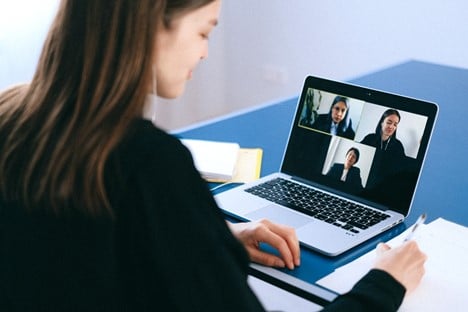With 2020 as one of the most challenging years for most of us, unprecedented problems demanded an unparalleled change in the business industry. Domestic and international locations are restricted, significantly affecting the global economy. Despite the disruption, global mobility teams have proven to be resilient, with technology as the crucial contributing factor. Remote work gave rise to various software applications and tools that offer services similar to when employees are in a physical workplace. Max Funding notes, “A more responsive organisation ensures that the employees are adaptive and flexible. Today’s competitive landscape demands an agile and versatile workforce.” Traditional workplaces became obsolete and impractical for most businesses during the pandemic and would likely turn to a prolonged virtual set-up to keep the company operational.
VIRTUAL OFFICE SET-UP
Organisations continue to strive for business continuity months after the onslaught of COVID-19. Most companies fret about a virtual office; thus, the best teams must use virtual tools to carry out workflow efficiently. While the project stakeholders used to meet face-to-face, the teams now need to adjust to the ‘new normal’ of virtual collaboration. As long as the organisation’s core values and processes are preserved, the physical aspect becomes a secondary concern. A virtual office needs a holistic approach, from maintaining good work relationships to project delivery and utilizing technology.
A. WORK RELATIONSHIPS
Maintaining open communication with project stakeholders, clients, and key vendors becomes even more crucial in a virtual context. Let your presence be felt by having a shared understanding of work schedules and preferred platforms for collaborating. Respect each other’s time by scheduling a regular virtual meeting that all parties agree on. Work relationships could also be preserved and nurtured through virtual lunch and learn sessions, coffee breaks, and other employee engagement programs.
B. PROJECT DELIVERY
Finding your virtual workspace where you could move with ease is crucial to having an effective project delivery. Organisations need to select appropriate tools that would work for the company. A physical workspace could be recreated into a virtual set-up by combining various software applications and project management tools. Training, collaborative sessions, and a virtual wall can be made possible by Mural and Miro. Video calls and meetings can utilize Zoom and MS Teams.
C. TECHNOLOGY ADVANCEMENT
As companies move to a remote work set-up, the technology pace brought forth innovative tools that even the not-so-tech-savvy workers could quickly adapt to. Zoom and MS Teams became a popular platform for holding team calls and meetings due to the “share screen” feature while having video calls. Team members can present and show virtual files during the session. Project Management has likewise become more organized through the use of Confluence, Trello, and Jira. Leaders could assign and track tasks of each member in real-time. While it may be difficult to explain ideas virtually, tools such as Miro replicate a whiteboard where sketches could be drawn. With these changes to the way we work across country borders, international networks such as The Employee Mobility Institute focus on supporting professionals and organizations in the business industry to develop, grow, and strengthen their talent management capabilities globally.



